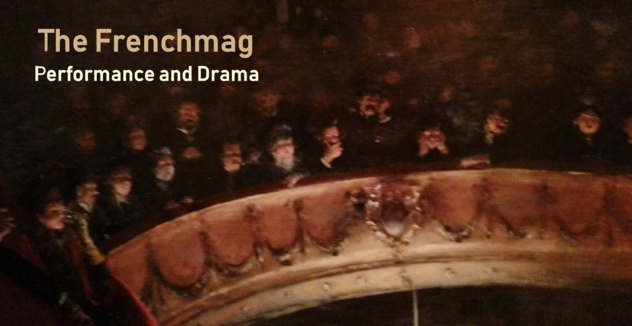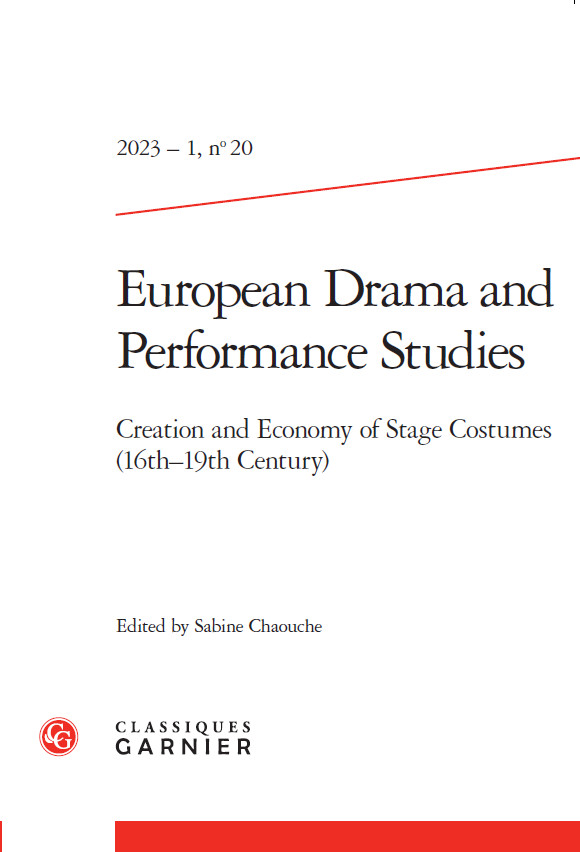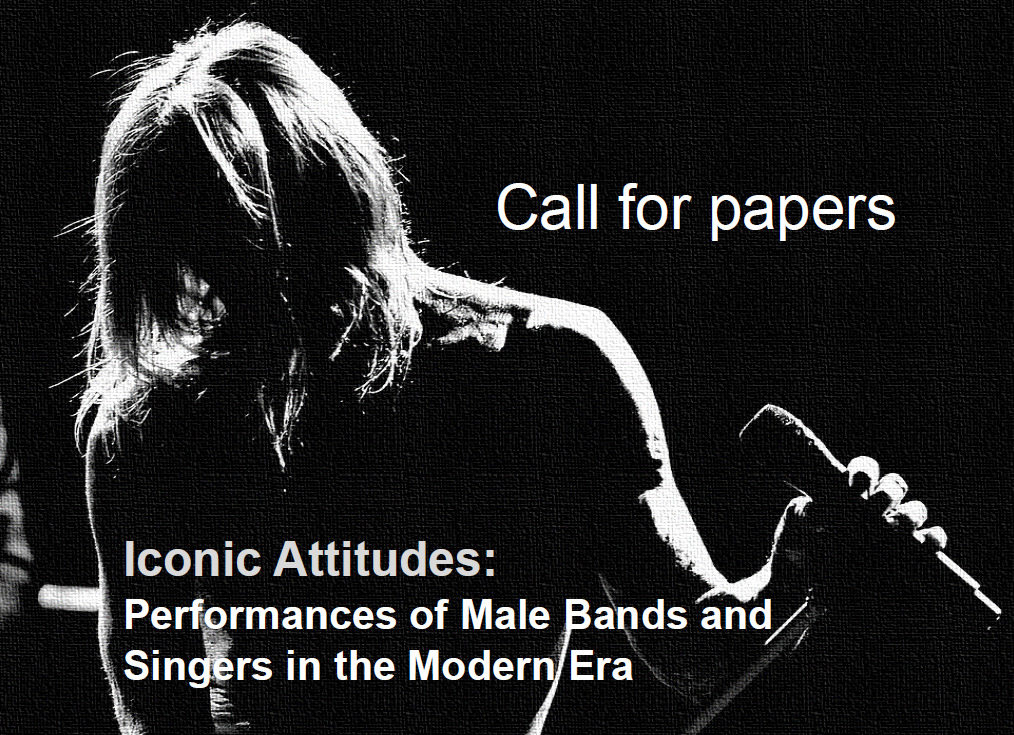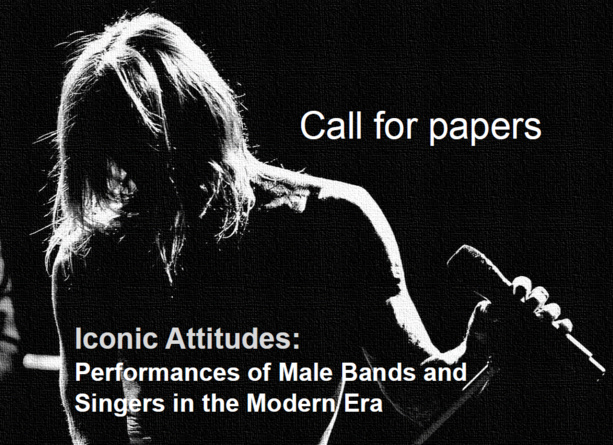Iconic Attitudes:
Music has long been recognized as a powerful cultural form of expression, with its performance being integral to the overall experience (Frith, 1996; Auslander, 2006). As a dynamic and evolving medium, music not only reflects societal values but also actively shapes cultural identities and social movements. From the 1960s to the present, genres such as rock (encompassing sub-genres like heavy metal, punk, grunge, and post-rock), rap, and K-Pop have significantly influenced generations, serving as both a mirror and a catalyst for change in popular and youth cultures (Hatch & Millward, 1987; Muggleton, 2000). These genres have created spaces for expressing resistance, negotiating identity, and constructing collective memories.
Rock music, from its inception in the 1960s, has been associated with rebellion and countercultural movements. Singers like Jim Morrison, David Bowie, and Freddie Mercury are celebrated not only for their musical talents but also for their charismatic stage personas and the way they challenged social norms (Regev, 1994; Weinstein, 1991). Rap’s inherent rebellious nature is often reflected in its lyrical content and performance style, which defy conventional norms and push boundaries (Rose, 1994; Chang, 2005). This genre’s emphasis on authenticity and lived experience allows artists to speak truth to power and mobilize their listeners, creating a form of cultural protest that resonates deeply with audiences worldwide (Forman & Neal, 2012). In contemporary times, K-Pop has emerged as a significant global phenomenon. Scholars such as Lie (2015) and Jin (2016) have explored how K-Pop bands became famous thanks to highly stylized performances, elaborate choreography, and a carefully crafted public image.
The concept of an iconic singer or frontman is complex and multifaceted, intertwining talent, charisma, and the ability to connect with audiences on a profound level. In this context, performance is key: it reveals certain expressive forms that define certain styles. The transformation of a performer into an icon involves more than vocal prowess or musical innovation; it is deeply tied to their stage presence and the ways in which their live and recorded performances contribute to and shape celebrity culture (Turner, 2013; Marshall, 1997). The performative aspect of music, including the development of a stage persona or the cultivation of a specific attitude on stage, is crucial to understanding the broader influence of these artists on their fans (Auslander, 2004).
Philip Auslander (2006) and Simon Frith (1996) have emphasized that live performances create a direct and powerful connection between the artist and the audience, often solidifying the artist’s public persona and cultural impact. This process involves not just the music itself but also the physicality and theatricality of the performance. This phenomenon raises important questions: What are the characteristics of stage practices that elevate a performer to iconic status? How do their performances—both live and mediated—reinforce or challenge existing cultural narratives, or go against societal norms? How does masculinity manifest itself in controversial, disruptive or creative musical performances? While the examination of musical genres and the industry has been extensive, including critical analyses of male hegemony within these spaces (Connell, 1995; Walser, 1993), there remains a significant gap in understanding the embodied practices of male singers during performances. This involves analysing how these performers stage their bodies to convey messages that are often dissident, and how they challenge expectations and norms (Weinstein, 1991).
This call for papers invites submissions that explore the staging of singers'/musicians’ bodies in performances, especially from the 1960s to the present day. We seek to investigate how these performances have defied conservative values and norms to become iconic (Regev, 1994). We are particularly interested in articles that provide novel insights into the historical contexts of past performances by lead singers or bands. We welcome interdisciplinary and cross-disciplinary approaches that delve into the interplay between musical performance, physicality, theatricality, and the presentation of the performer. This includes, but is not limited to, analyses within rock, metal, punk, rap, and K-Pop genres (Railton & Watson, 2011). Potential areas of exploration—not limited to Europe or the US—include:
Decency and Decorum: Investigations into how singers have historically challenged notions of decency and decorum through their on-stage presentations, including clothing, hairstyles, makeup, tattoos, and nudity. This also involves examining the cultural and historical contexts that influenced these presentations (Hebdige, 1979; Reynolds & Press, 1995; Oh & Park, 2020).
Performance Styles of Rap, Rock or K-Pop Singers etc.: Detailed examinations of the performance styles of iconic figures like Jim Morrison, Iggy Pop, Led Zeppelin, Jimmy Hendrix, Red Hot Chili Peppers, David Bowie, Freddie Mercury, Téléphone, Shaka Ponk, Biffy Clyro, Kendrick Lamar among others. This may include analyses of how these artists have aged and continued to perform, as well as the staging of their performances involving movements, trance, and dance (Clarke, 1982; Fast, 2001; Lee, 2019).
The Theatricalization of Musical Performances: Exploration of the use of technology and special effects in performances, set design, and the overall theatrical experience to convey specific messages. This includes the impact of such elements on the audience’s experience and the performers’ stage personas (Auslander, 1999; Beebe & Fulbrook, 2010; Jung, 2015).
The Reception of the Performances: Studies on audience reactions to iconic shows, including phenomena such as hysteria, collective hallucination, and physical altercations. This section also invites research on media coverage of these unparalleled performances and their impact on contemporary popular culture and the formation of countercultures (Thornton, 1996; Frith, 1981; Kim, 2020).
Vocalising Hegemonies: Critical analyses of the normative stereotypes within the music industry, particularly concerning intersectional issues of gender, race, and sexuality in musical live performances. This includes examining how performers navigate and challenge these hegemonies through their stagecraft (Hooks, 1994; McRobbie, 1991; Choi & Maliangkay, 2014).
Submissions are welcome from scholars in musicology, performance studies, cultural studies, gender studies, sociology, and related fields. We encourage contributions that employ diverse methodological approaches, including ethnography, archival research, discourse analysis, and other forms of critical inquiry. Articles should be between 6,000 and 8,000 words and will be published in EDPS. European Drama and Performance Studies - Littératures - Revues - Classiques Garnier (classiques-garnier.com).
Send your 300-word abstract and bio-biblio to sabine.chaouche.pro@gmail.com by 30 December 2024.
Notifications of acceptance will follow shortly after the deadline.
Articles in English or French to be submitted by 10 March 2025.
References:
Auslander, P. (1999). Liveness: Performance in a Mediatized Culture. Routledge.
Auslander, P. (2004). Performance Analysis. Routledge.
Auslander, P. (2006). Performing Glam Rock: Gender and Theatricality in Popular Music. University of Michigan Press.
Beebe, R., & Fulbrook, J. (2010). Rock Over the Edge: Transformations in Popular Music Culture. Duke University Press.
Chang, J. (2005). Can’t Stop Won’t Stop: A History of the Hip-Hop Generation. Picador.
Choi, J. B., & Maliangkay, R. (2014). K-pop - The International Rise of the Korean Music Industry. Routledge.
Clarke, D. (1982). The Politics of Pop. Faber & Faber.
Connell, R. W. (1995). Masculinities. Polity Press.
Fast, S. (2001). In the Houses of the Holy: Led Zeppelin and the Power of Rock Music. Oxford University Press.
Forman, M. and Neal, M. A. (2012). That’s the Joint!: The Hip-Hop Studies Reader. Routledge.
Frith, S. (1981). Sound Effects: Youth, Leisure, and the Politics of Rock ‘n’ Roll. Constable.
Frith, S. (1996). Performing Rites: On the Value of Popular Music. Harvard University Press.
Giraldo, V. (2020). “Referential iconicity in music and speech”. Public Journal of Semiotics, 9(1), 41–77
Hatch, D., & Millward, S. (1987). From Blues to Rock: An Analytical History of Pop Music. Manchester University Press.
Hebdige, D. (1979). Subculture: The Meaning of Style. Methuen.
Hooks, B. (1994). Outlaw Culture: Resisting Representations. Routledge.
Jin, D. Y. (2016). New Korean Wave: Transnational Cultural Power in the Age of Social Media. University of Illinois Press.
Jung, S. (2015). K-pop Idols: Popular Culture and the Emergence of the Korean Music Industry. Lexington Books.
Kim, J. (2020). “K-pop’s Global Success and Its Implications for South Korea’s Soft Power.” International Journal of Communication, 14, 3225-3243.
Kim, Y. (2021). K-Pop Live: Fans, Idols, and Multimedia Performance. Stanford University Press.
Lee, H. (2019). Idol Trainees’ Sweat and Tears: Anthropological Perspectives on K-Pop. Palgrave Macmillan.
Lie, J. (2015). K-Pop: Popular Music, Cultural Amnesia, and Economic Innovation in South Korea. University of California Press.
Marshall, P. D. (1997). Celebrity and Power: Fame in Contemporary Culture. University of Minnesota Press.
McRobbie, A. (1991). Feminism and Youth Culture: From Jackie to Just Seventeen. Macmillan.
Muggleton, D. (2000). Inside Subculture: The Postmodern Meaning of Style. Berg.
Oh, I. (2013). “The Globalization of K-pop: Korea’s Place in the Global Music Industry”. Korea Observer, 44(3), 389-409.
Oh, I., & Park, G. S. (2020). “Manufacturing Creativity: Production, Performance, and Consumption of K-pop.” Global Media Journal, 18(35), 1-10.
Railton, D., & Watson, P. (2011). Music Video and the Politics of Representation. Edinburgh University Press.
Regev, M. (1994). “Producing Artistic Value: The Case of Rock Music.” Sociological Quarterly, 35(1), 85-102.
Reynolds, S., & Press, J. (1995). The Sex Revolts: Gender, Rebellion and Rock ‘n’ Roll. Harvard University Press.
Rose, T. (1994). Black Noise: Rap Music and Black Culture in Contemporary America. Wesleyan University Press.
Thornton, S. (1996). Club Cultures: Music, Media, and Subcultural Capital. Wesleyan University Press.
Turner, G. (2013). Understanding Celebrity. SAGE Publications.
Walser, R. (1993). Running with the Devil: Power, Gender, and Madness in Heavy Metal Music. Wesleyan University Press.
Weinstein, D. (1991). Heavy Metal: A Cultural Sociology. Lexington Books.
Music has long been recognized as a powerful cultural form of expression, with its performance being integral to the overall experience (Frith, 1996; Auslander, 2006). As a dynamic and evolving medium, music not only reflects societal values but also actively shapes cultural identities and social movements. From the 1960s to the present, genres such as rock (encompassing sub-genres like heavy metal, punk, grunge, and post-rock), rap, and K-Pop have significantly influenced generations, serving as both a mirror and a catalyst for change in popular and youth cultures (Hatch & Millward, 1987; Muggleton, 2000). These genres have created spaces for expressing resistance, negotiating identity, and constructing collective memories.
Rock music, from its inception in the 1960s, has been associated with rebellion and countercultural movements. Singers like Jim Morrison, David Bowie, and Freddie Mercury are celebrated not only for their musical talents but also for their charismatic stage personas and the way they challenged social norms (Regev, 1994; Weinstein, 1991). Rap’s inherent rebellious nature is often reflected in its lyrical content and performance style, which defy conventional norms and push boundaries (Rose, 1994; Chang, 2005). This genre’s emphasis on authenticity and lived experience allows artists to speak truth to power and mobilize their listeners, creating a form of cultural protest that resonates deeply with audiences worldwide (Forman & Neal, 2012). In contemporary times, K-Pop has emerged as a significant global phenomenon. Scholars such as Lie (2015) and Jin (2016) have explored how K-Pop bands became famous thanks to highly stylized performances, elaborate choreography, and a carefully crafted public image.
The concept of an iconic singer or frontman is complex and multifaceted, intertwining talent, charisma, and the ability to connect with audiences on a profound level. In this context, performance is key: it reveals certain expressive forms that define certain styles. The transformation of a performer into an icon involves more than vocal prowess or musical innovation; it is deeply tied to their stage presence and the ways in which their live and recorded performances contribute to and shape celebrity culture (Turner, 2013; Marshall, 1997). The performative aspect of music, including the development of a stage persona or the cultivation of a specific attitude on stage, is crucial to understanding the broader influence of these artists on their fans (Auslander, 2004).
Philip Auslander (2006) and Simon Frith (1996) have emphasized that live performances create a direct and powerful connection between the artist and the audience, often solidifying the artist’s public persona and cultural impact. This process involves not just the music itself but also the physicality and theatricality of the performance. This phenomenon raises important questions: What are the characteristics of stage practices that elevate a performer to iconic status? How do their performances—both live and mediated—reinforce or challenge existing cultural narratives, or go against societal norms? How does masculinity manifest itself in controversial, disruptive or creative musical performances? While the examination of musical genres and the industry has been extensive, including critical analyses of male hegemony within these spaces (Connell, 1995; Walser, 1993), there remains a significant gap in understanding the embodied practices of male singers during performances. This involves analysing how these performers stage their bodies to convey messages that are often dissident, and how they challenge expectations and norms (Weinstein, 1991).
This call for papers invites submissions that explore the staging of singers'/musicians’ bodies in performances, especially from the 1960s to the present day. We seek to investigate how these performances have defied conservative values and norms to become iconic (Regev, 1994). We are particularly interested in articles that provide novel insights into the historical contexts of past performances by lead singers or bands. We welcome interdisciplinary and cross-disciplinary approaches that delve into the interplay between musical performance, physicality, theatricality, and the presentation of the performer. This includes, but is not limited to, analyses within rock, metal, punk, rap, and K-Pop genres (Railton & Watson, 2011). Potential areas of exploration—not limited to Europe or the US—include:
Decency and Decorum: Investigations into how singers have historically challenged notions of decency and decorum through their on-stage presentations, including clothing, hairstyles, makeup, tattoos, and nudity. This also involves examining the cultural and historical contexts that influenced these presentations (Hebdige, 1979; Reynolds & Press, 1995; Oh & Park, 2020).
Performance Styles of Rap, Rock or K-Pop Singers etc.: Detailed examinations of the performance styles of iconic figures like Jim Morrison, Iggy Pop, Led Zeppelin, Jimmy Hendrix, Red Hot Chili Peppers, David Bowie, Freddie Mercury, Téléphone, Shaka Ponk, Biffy Clyro, Kendrick Lamar among others. This may include analyses of how these artists have aged and continued to perform, as well as the staging of their performances involving movements, trance, and dance (Clarke, 1982; Fast, 2001; Lee, 2019).
The Theatricalization of Musical Performances: Exploration of the use of technology and special effects in performances, set design, and the overall theatrical experience to convey specific messages. This includes the impact of such elements on the audience’s experience and the performers’ stage personas (Auslander, 1999; Beebe & Fulbrook, 2010; Jung, 2015).
The Reception of the Performances: Studies on audience reactions to iconic shows, including phenomena such as hysteria, collective hallucination, and physical altercations. This section also invites research on media coverage of these unparalleled performances and their impact on contemporary popular culture and the formation of countercultures (Thornton, 1996; Frith, 1981; Kim, 2020).
Vocalising Hegemonies: Critical analyses of the normative stereotypes within the music industry, particularly concerning intersectional issues of gender, race, and sexuality in musical live performances. This includes examining how performers navigate and challenge these hegemonies through their stagecraft (Hooks, 1994; McRobbie, 1991; Choi & Maliangkay, 2014).
Submissions are welcome from scholars in musicology, performance studies, cultural studies, gender studies, sociology, and related fields. We encourage contributions that employ diverse methodological approaches, including ethnography, archival research, discourse analysis, and other forms of critical inquiry. Articles should be between 6,000 and 8,000 words and will be published in EDPS. European Drama and Performance Studies - Littératures - Revues - Classiques Garnier (classiques-garnier.com).
Send your 300-word abstract and bio-biblio to sabine.chaouche.pro@gmail.com by 30 December 2024.
Notifications of acceptance will follow shortly after the deadline.
Articles in English or French to be submitted by 10 March 2025.
References:
Auslander, P. (1999). Liveness: Performance in a Mediatized Culture. Routledge.
Auslander, P. (2004). Performance Analysis. Routledge.
Auslander, P. (2006). Performing Glam Rock: Gender and Theatricality in Popular Music. University of Michigan Press.
Beebe, R., & Fulbrook, J. (2010). Rock Over the Edge: Transformations in Popular Music Culture. Duke University Press.
Chang, J. (2005). Can’t Stop Won’t Stop: A History of the Hip-Hop Generation. Picador.
Choi, J. B., & Maliangkay, R. (2014). K-pop - The International Rise of the Korean Music Industry. Routledge.
Clarke, D. (1982). The Politics of Pop. Faber & Faber.
Connell, R. W. (1995). Masculinities. Polity Press.
Fast, S. (2001). In the Houses of the Holy: Led Zeppelin and the Power of Rock Music. Oxford University Press.
Forman, M. and Neal, M. A. (2012). That’s the Joint!: The Hip-Hop Studies Reader. Routledge.
Frith, S. (1981). Sound Effects: Youth, Leisure, and the Politics of Rock ‘n’ Roll. Constable.
Frith, S. (1996). Performing Rites: On the Value of Popular Music. Harvard University Press.
Giraldo, V. (2020). “Referential iconicity in music and speech”. Public Journal of Semiotics, 9(1), 41–77
Hatch, D., & Millward, S. (1987). From Blues to Rock: An Analytical History of Pop Music. Manchester University Press.
Hebdige, D. (1979). Subculture: The Meaning of Style. Methuen.
Hooks, B. (1994). Outlaw Culture: Resisting Representations. Routledge.
Jin, D. Y. (2016). New Korean Wave: Transnational Cultural Power in the Age of Social Media. University of Illinois Press.
Jung, S. (2015). K-pop Idols: Popular Culture and the Emergence of the Korean Music Industry. Lexington Books.
Kim, J. (2020). “K-pop’s Global Success and Its Implications for South Korea’s Soft Power.” International Journal of Communication, 14, 3225-3243.
Kim, Y. (2021). K-Pop Live: Fans, Idols, and Multimedia Performance. Stanford University Press.
Lee, H. (2019). Idol Trainees’ Sweat and Tears: Anthropological Perspectives on K-Pop. Palgrave Macmillan.
Lie, J. (2015). K-Pop: Popular Music, Cultural Amnesia, and Economic Innovation in South Korea. University of California Press.
Marshall, P. D. (1997). Celebrity and Power: Fame in Contemporary Culture. University of Minnesota Press.
McRobbie, A. (1991). Feminism and Youth Culture: From Jackie to Just Seventeen. Macmillan.
Muggleton, D. (2000). Inside Subculture: The Postmodern Meaning of Style. Berg.
Oh, I. (2013). “The Globalization of K-pop: Korea’s Place in the Global Music Industry”. Korea Observer, 44(3), 389-409.
Oh, I., & Park, G. S. (2020). “Manufacturing Creativity: Production, Performance, and Consumption of K-pop.” Global Media Journal, 18(35), 1-10.
Railton, D., & Watson, P. (2011). Music Video and the Politics of Representation. Edinburgh University Press.
Regev, M. (1994). “Producing Artistic Value: The Case of Rock Music.” Sociological Quarterly, 35(1), 85-102.
Reynolds, S., & Press, J. (1995). The Sex Revolts: Gender, Rebellion and Rock ‘n’ Roll. Harvard University Press.
Rose, T. (1994). Black Noise: Rap Music and Black Culture in Contemporary America. Wesleyan University Press.
Thornton, S. (1996). Club Cultures: Music, Media, and Subcultural Capital. Wesleyan University Press.
Turner, G. (2013). Understanding Celebrity. SAGE Publications.
Walser, R. (1993). Running with the Devil: Power, Gender, and Madness in Heavy Metal Music. Wesleyan University Press.
Weinstein, D. (1991). Heavy Metal: A Cultural Sociology. Lexington Books.






